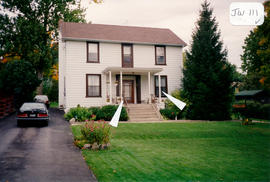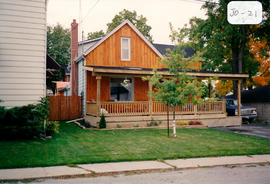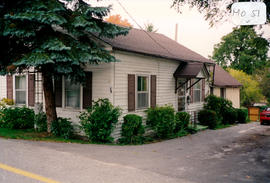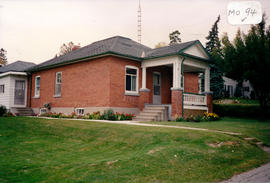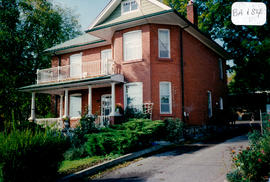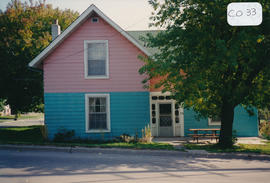- CA BWGPL GJ-HB-2017-04-06-02
- Item
- 1995
Part of George Jackson fonds
The mid-block building located on the north side at 111 John St. West was built around 1880 in the Neoclassical style. It was known locally as “The Edmanson Home”. Thomas Edmanson was an undertaker and a businessman who lived here for many years. The house became the home of Charles Soper and his wife Eva (Edmanson) and daughters Doris and Caroline before World War II.
The two-storey, rectangular building has a one-storey rear addition that was originally the summer kitchen. It also has a symmetrical façade, a centre hall plan, and a medium-pitched, gable roof. The original entrance probably had sidelights, a transom, and a roof with a steeper slope. It may also have been wider. The house has large window openings with high floor to ceiling dimensions and large, double-hung windows. Second-floor windows are slightly smaller than those at the ground floor (a local vernacular modification). The original windows would have been multi-paned. Wood frame construction has replacement exterior siding and there is a parged, stone foundation. The existing chimney is also a replacement. Chimneys originally located at the roof peak have been demolished. According to the 2000 inventory, the existing entrance, porch, and many windows and doors do not reflect the original design intent. (1, 2, 3)
Please contact the Bradford West Gwillimbury Public Library (905-775-3328) if you have any other information about this photo.
George Jackson

